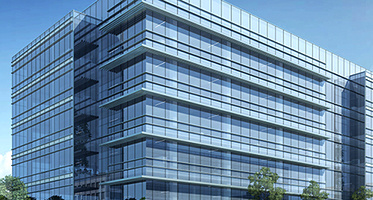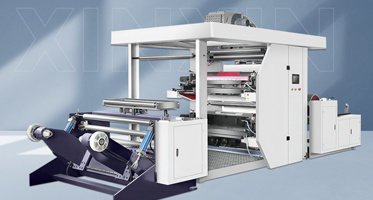10
2025
-
01
Exploring the Efficiency of Modern Flexo Printing Technology: Innovations and Benefits
Author:
Exploring the Efficiency of Modern Flexo Printing Technology
Table of Contents
- 1. Introduction to Flexo Printing Technology
- 2. A Brief History of Flexo Printing
- 3. How Flexo Printing Works: The Mechanics Explained
- 4. Advantages of Modern Flexo Printing Technology
- 5. Key Applications of Flexo Printing in Various Industries
- 6. Innovations in Flexo Printing Technology
- 7. Environmental Impact and Sustainability of Flexo Printing
- 8. The Future of Flexo Printing Technology
- 9. Frequently Asked Questions (FAQs)
- 10. Conclusion
1. Introduction to Flexo Printing Technology
Flexo printing, or flexographic printing, has emerged as one of the most efficient and versatile printing methods in the manufacturing industry. It utilizes flexible relief plates to transfer ink onto various substrates, making it particularly suitable for high-speed printing on materials like paper, film, and foil. The **efficiency of modern flexo printing technology** lies not only in its speed but also in its ability to produce high-quality prints at a lower cost compared to traditional printing methods.
2. A Brief History of Flexo Printing
Flexo printing technology has evolved significantly since its inception in the late 19th century. Initially used for printing newspapers, it has expanded into diverse applications, including packaging and labels. The introduction of photopolymer plates in the 1970s marked a turning point, enhancing print quality and enabling faster production speeds. Today, flexo printing stands as a cornerstone of the printing industry, known for its adaptability and continual improvements.
3. How Flexo Printing Works: The Mechanics Explained
Understanding the mechanics of flexo printing is key to appreciating its efficiency.
3.1 The Printing Process
The flexo printing process involves several key steps:
1. **Plate Preparation**: Flexible photopolymer plates are prepared with the desired image or text.
2. **Inking**: The plates are coated with liquid ink, which is typically water-based, UV-curable, or solvent-based.
3. **Transfer**: The inked plate presses against the substrate, transferring the ink to create the final image.
4. **Drying**: An inline drying process ensures the ink sets quickly, allowing for rapid production speeds.
3.2 Key Components of Flexo Printing
The efficiency of flexo printing comes from its sophisticated machinery. Key components include:
- **Anilox Roller**: This component controls the amount of ink transferred, ensuring even coverage.
- **Doctor Blade**: This system removes excess ink from the anilox roller, preventing smudging and ensuring crisp prints.
- **Print Cylinder**: The flexible plate is mounted on this cylinder, which rotates to create the printing action.
4. Advantages of Modern Flexo Printing Technology
Modern flexo printing technology offers numerous advantages that enhance its efficiency and effectiveness.
4.1 High-Speed Production
Flexo printing is renowned for its ability to operate at high speeds, making it ideal for large-volume jobs. This speed is crucial in today’s fast-paced manufacturing environment, where time-to-market can determine a company’s competitive edge.
4.2 Cost-Effectiveness
The use of water-based inks and the efficiency of the printing process contribute to lower production costs. Additionally, the longevity of flexo plates means fewer replacements, further reducing expenses.
4.3 Versatility in Substrates
Flexo printing can print on a wide range of substrates, from thin films to thick cardboard, making it a versatile choice for various applications, including labels, packaging, and flexible materials.
4.4 Improved Print Quality
Advancements in plate technology and inks have greatly improved the quality of prints produced by flexo printing, allowing for fine details and vibrant colors that rival other printing methods.
4.5 Eco-Friendly Options
With a growing emphasis on sustainability, modern flexo printing has adapted by using eco-friendly inks and materials, making it a preferable option for environmentally conscious businesses.
5. Key Applications of Flexo Printing in Various Industries
Flexo printing technology has found its place in diverse sectors, thanks to its flexibility and efficiency.
5.1 Packaging Industry
The packaging industry is one of the largest consumers of flexo printing. Its ability to produce vibrant, high-quality images on flexible packaging materials makes it ideal for food, beverages, and consumer goods.
5.2 Label Printing
Flexo printing is widely used for producing labels, offering various finishes and styles, including pressure-sensitive labels and shrink sleeves.
5.3 Publication and Commercial Printing
While less common than offset printing, flexo printing is still used for certain types of commercial printing, especially for high-volume projects.
5.4 Textile Printing
The textile industry utilizes flexo printing to create unique designs on fabric, allowing for rapid production of custom patterns.
6. Innovations in Flexo Printing Technology
Keeping pace with the rapidly changing technology landscape, flexo printing has seen numerous innovations aimed at enhancing its efficiency.
6.1 Digital Flexo Printing
Digital flexo printing combines the best aspects of traditional flexo and digital printing, allowing for quicker setups and shorter runs without sacrificing quality.
6.2 Advanced Plate Technology
The development of high-definition plates enables finer detail and better color accuracy, enhancing print quality significantly.
6.3 Automation and Smart Technologies
Automation in pre-press, printing, and post-press processes has improved production efficiency. Smart technologies monitor performance metrics, helping operators optimize workflows.
7. Environmental Impact and Sustainability of Flexo Printing
Sustainability has become paramount in manufacturing, and flexo printing is stepping up to the plate.
7.1 Eco-Friendly Inks
The shift to water-based and low-VOC (volatile organic compounds) inks has made flexo printing a more sustainable option compared to other printing methods.
7.2 Waste Reduction
Modern flexo printing processes emphasize waste reduction through efficient ink usage and precision printing techniques, contributing to a smaller environmental footprint.
8. The Future of Flexo Printing Technology
The future of flexo printing looks promising, driven by ongoing innovations and the need for efficiency.
8.1 Integration with Automation
As automation technology continues to advance, the integration of AI and machine learning into flexo printing processes could lead to even greater efficiencies and reduced production times.
8.2 Continued Focus on Sustainability
With environmental regulations becoming stricter, the focus on sustainable practices in flexo printing is likely to grow, prompting further innovations in eco-friendly materials and inks.
9. Frequently Asked Questions (FAQs)
1. What are the main advantages of flexo printing compared to other printing methods?
Flexo printing offers high-speed production, cost-effectiveness, versatility across substrates, improved print quality, and eco-friendly options, making it a preferred choice for many applications.
2. Can flexo printing be used for packaging food products?
Yes, flexo printing is widely used for food packaging, as it utilizes safe, food-grade inks and allows for high-quality prints that meet industry standards.
3. How does automation enhance flexo printing efficiency?
Automation streamlines pre-press, printing, and post-press processes, reducing downtime and increasing production speeds by minimizing manual errors and optimizing workflows.
4. What materials can be printed using flexo printing technology?
Flexo printing can be used on a variety of substrates, including paper, plastic films, cardboard, and textiles, making it highly versatile for multiple applications.
5. What are the environmental benefits of modern flexo printing?
Modern flexo printing technologies use eco-friendly inks, reduce waste through efficient processes, and embrace sustainability practices, contributing to a lower environmental impact.
10. Conclusion
Modern flexo printing technology represents a significant advancement in the printing industry, offering unparalleled efficiency, versatility, and sustainability. As businesses continue to seek cost-effective and high-quality printing solutions, flexo printing is poised to remain a critical player in various sectors, from packaging to textiles. With ongoing innovations in technology and a growing emphasis on environmental responsibility, the future of flexo printing is bright, promising to meet the demands of an ever-evolving marketplace. By understanding and leveraging the advantages of this technology, businesses can not only enhance their operational efficiency but also contribute positively to the industry's sustainability efforts.
Related news
MESSAGE

Mobile website
Contact Us
Contacts:Alen Zhao
WeChat/Whatsapp:+ 86 18857712033
Mobile:+86 18857712033
E-mail:sales@xinxin-flexo.com
Add:No. 511, Development Zone Avenue, Ruian Economic Development Zone, Wenzhou City, Zhejiang Province, China
Fax:+86-577-65160712














